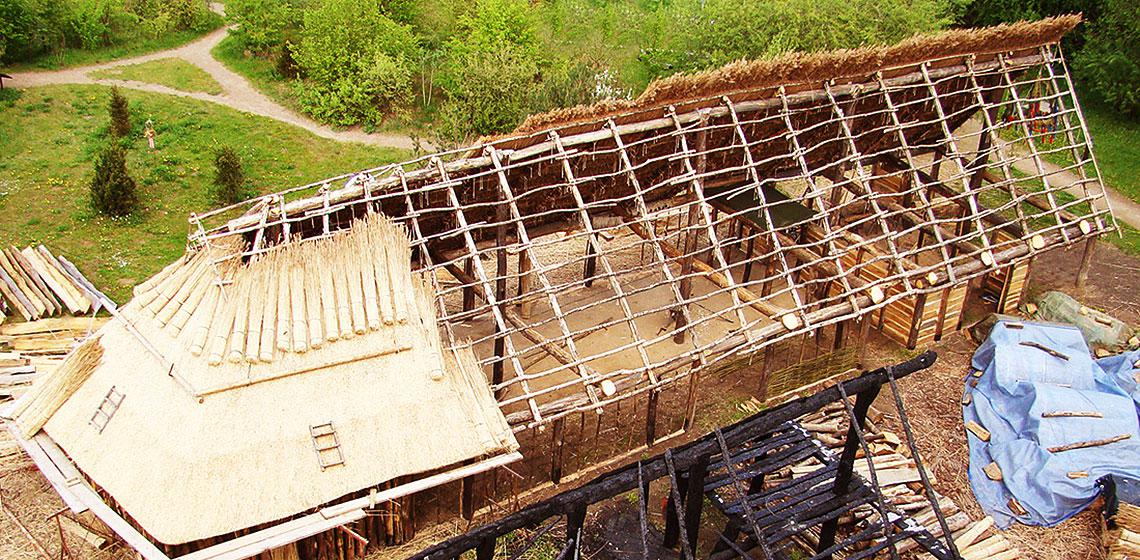
Vienna Institute of Archaeological Sciences - Experimental archaeology
Coordinator: Dr Wolfgang Lobisser
Research services:
• Archaeological experiments on specific research questions
• Reconstruction of archaeological exhibits
• Conception and planning of exhibition projects
• Construction of archaeological open-air museums
Experimental archaeology is highly suited to putting our ideas of the technical capabilities of our ancestors on a lifelike basis, to review our explanations and interpretations of excavation findings.
The experiment begins where conventional methods of archaeology no longer work and tries to test, explain and ultimately reconstruct crafting practices, technical equipment and work processes.
In recent years, employees of the interdisciplinary research platform for archaeological sciences (VIAS - Vienna Institute for Archaeological Science) have conducted numerous archaeological experiments on topics such as prehistoric architecture, wood technology, ceramics, textile techniques, bone and antler carving, as well as leather, fur and stone working performed.
A lot of this experimental work has been carried out in the course of contract research in the construction of archaeological open-air museums or in the experimental production of showpieces for exhibitions and presentations.
The interdisciplinary research platform for archeology "VIAS" is available for archaeological experiments as a partner for exhibitions and archaeological open-air projects.
The procedure for archaeological experiments is based primarily on the natural sciences, with a formulated research question should serve as a starting point for each experiment, which usually results from the interpretation of a current excavation, a historical text or a pictorial representation.
The documentation relies on modern technology, measuring instruments, video recordings as well as on photographs and written records. The results thus obtained are analysed and compared with the current state of research, which is either confirmed or must be corrected accordingly in new findings.
The construction of prehistoric architectural models using VIAS methods of experimental archaeology
"Archeological parks are likely to shape the image of our children and grandchildren more sustainably than all our specialized scientific treatises put together."
"Archäologische Parks werden das Geschichtsbild unserer Kinder und Enkel vermutlich nachhaltiger prägen, als all unsere spezialwissenschaftlichen Traktate zusammengenommen."
(W. Gauer)
Since the year 2002, the VIAS is engaged in the planning, design and construction of archaeological open-air facilities. The construction of the facilities is carried out with extensive use of methods of experimental archaeology and thus creates the opportunity to gain new insights into the prehistoric architecture, as well as to the various work traditions and craft techniques.
The term "archaeological open-air museum" describes facilities that show reconstructions recreated to the visitor and of prehistoric architectural models. These are mostly buildings, technical installations or agricultural complexes, such as show gardens, meadows or arable land.
Archaeological open-air museums largely shape the history of the general public. This makes it clear how great is the responsibility of those who plan these plants and put them into practice.
The project partners and principals of VIAS are mostly municipalities, which in turn want to set up tourist facilities in the sense of the educational mission by presenting prehistoric realities of life.
